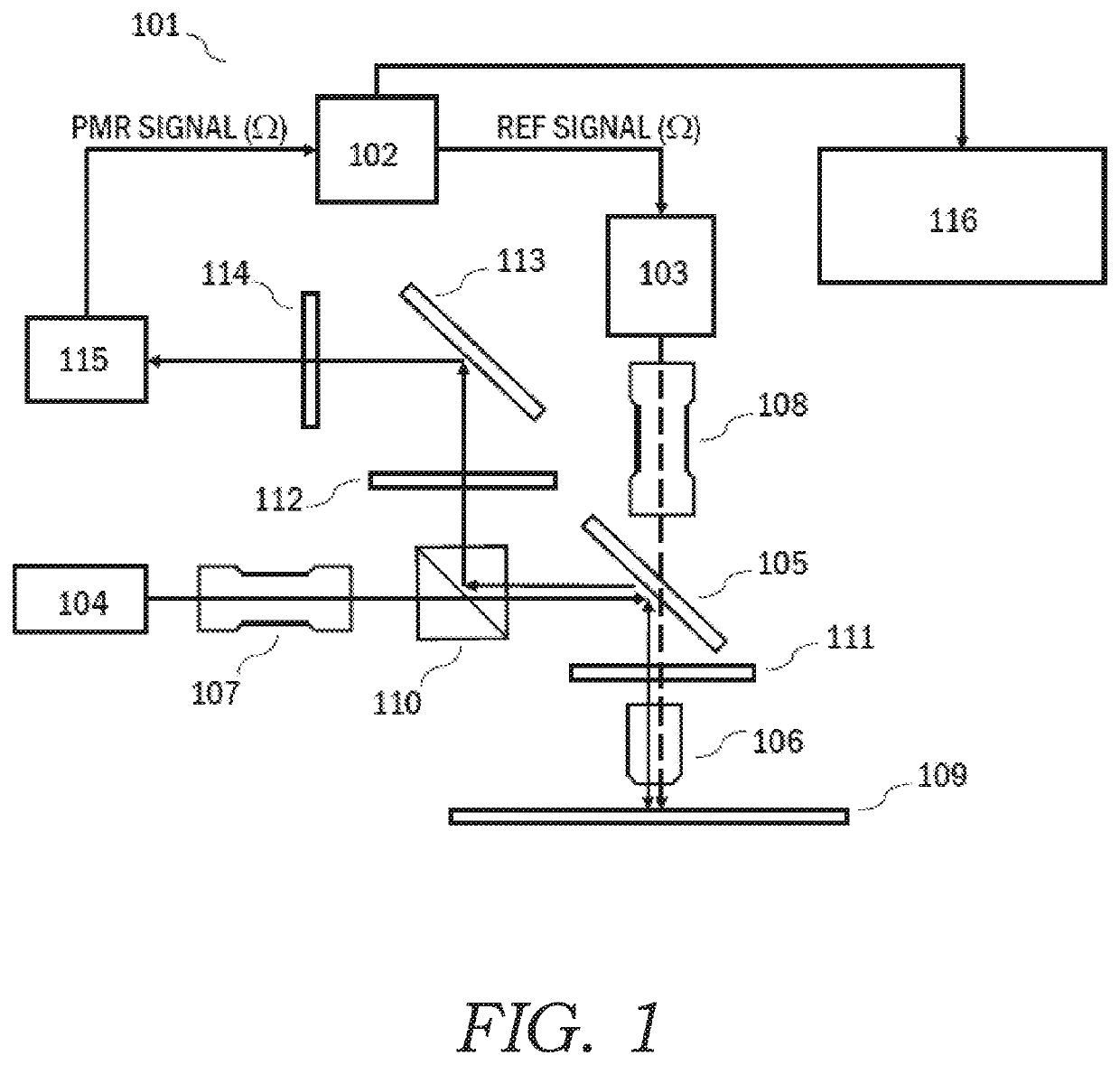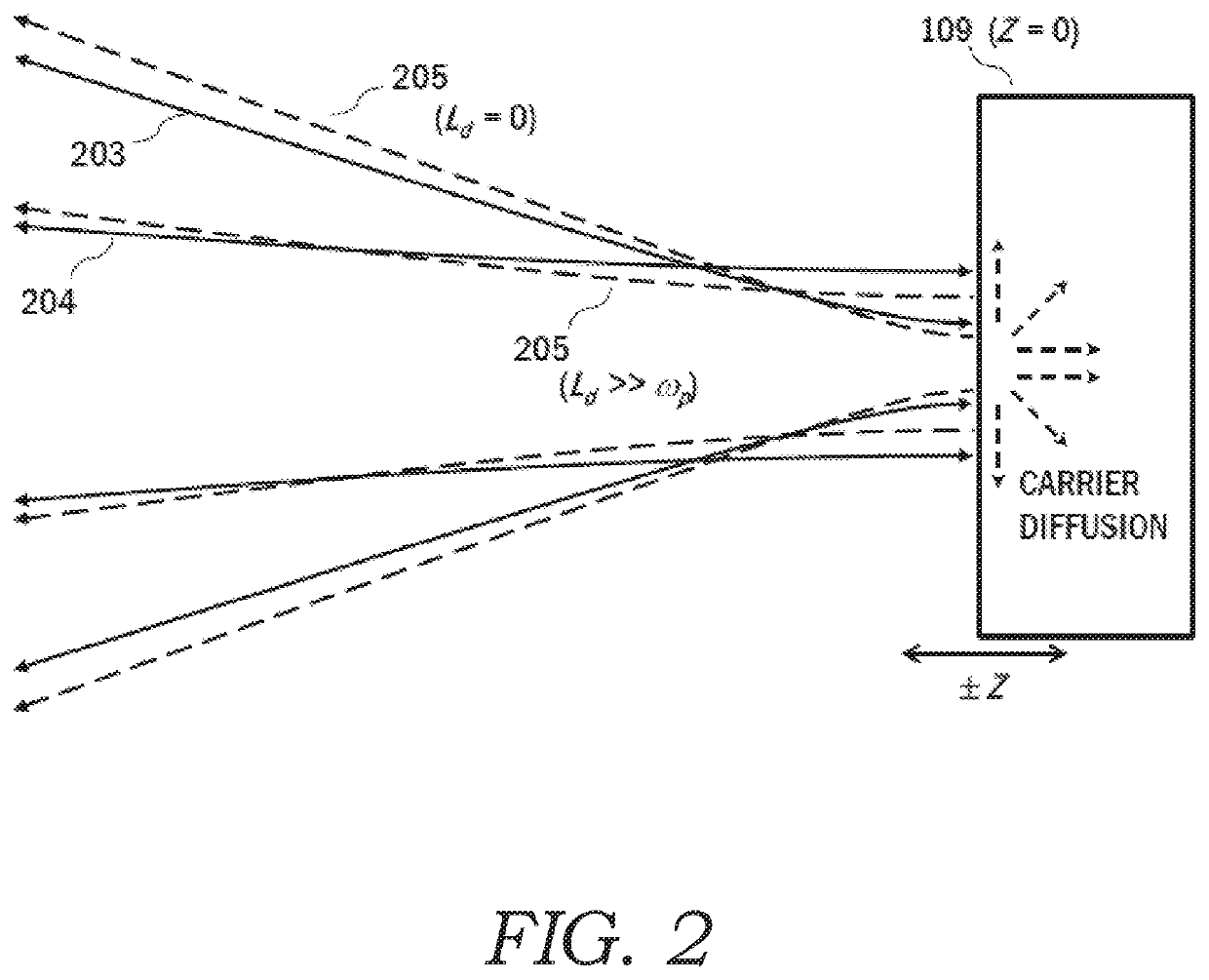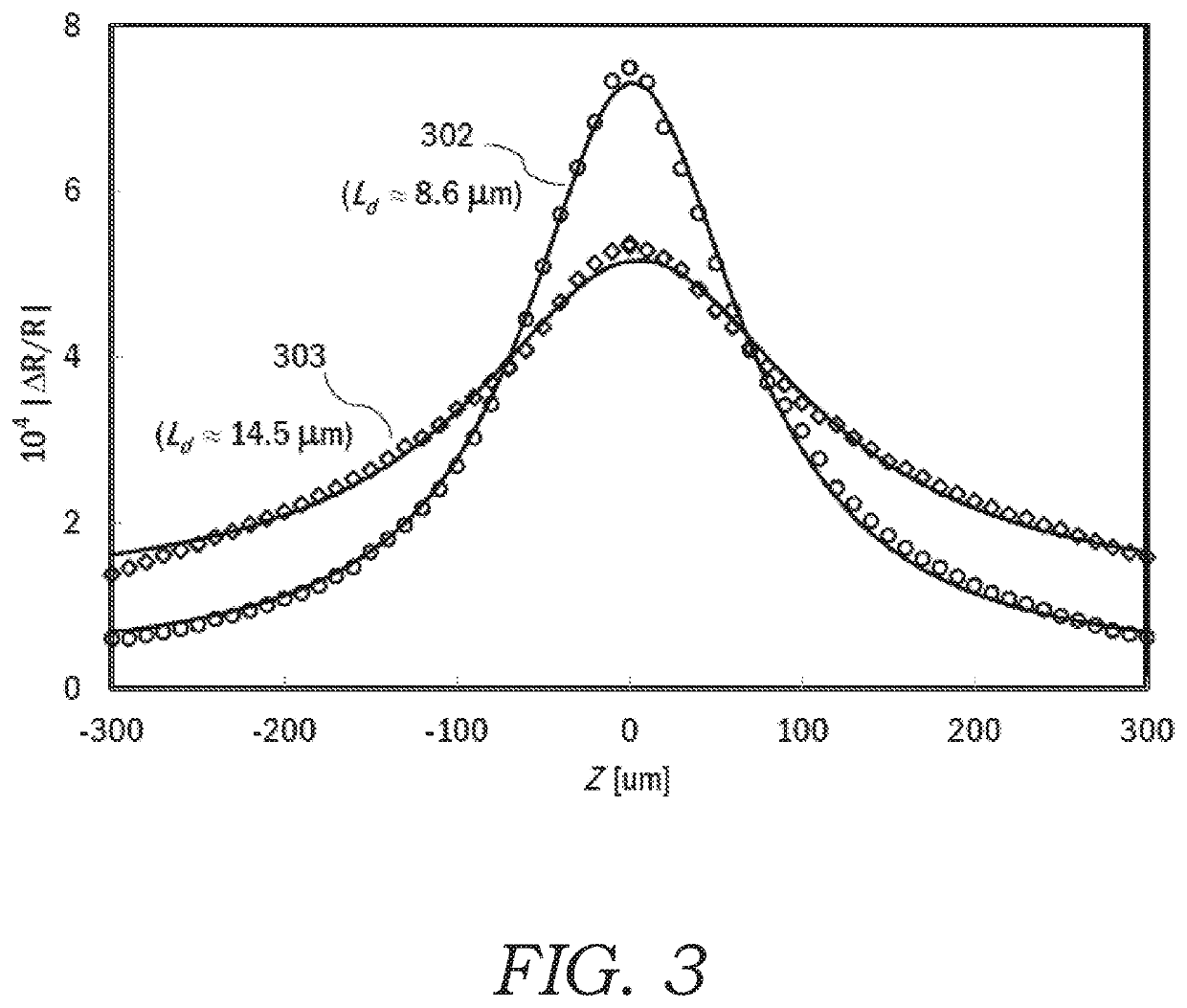High precision optical characterization of carrier transport properties in semiconductors
a carrier transport and optical characterization technology, applied in the direction of electronic circuit testing, measurement devices, instruments, etc., can solve the problems of loss of manufacturing yield, device timing variability, and many process steps have the potential to alter or degrade the carrier transport properties, and achieve high precision optical characterization of carrier transport properties
- Summary
- Abstract
- Description
- Claims
- Application Information
AI Technical Summary
Benefits of technology
Problems solved by technology
Method used
Image
Examples
Embodiment Construction
[0024]The following discusses use of the method of Z-scanning laser photo-modulated reflectance characterization of electronic transport properties in semiconductors. It is understood that the method of the present description may be used to determine electronic transport properties in any semiconductor, the discussion of exemplary silicon semiconductors considered to be exemplary only and in no way limiting in scope. It should be appreciated that the present invention provides numerous applicable inventive concepts that may be embodied in a variety of specific contexts. The specific embodiments discussed herein are merely illustrative of specific ways to make and / or use the invention and are not intended to delimit the scope of the invention.
[0025]The present invention is based upon profiling of the output signals of a laser PMR system as the sample is stepped through focus. The specific embodiments discussed here use laser beams having a cylindrically symmetric Gaussian intensity ...
PUM
 Login to View More
Login to View More Abstract
Description
Claims
Application Information
 Login to View More
Login to View More - R&D
- Intellectual Property
- Life Sciences
- Materials
- Tech Scout
- Unparalleled Data Quality
- Higher Quality Content
- 60% Fewer Hallucinations
Browse by: Latest US Patents, China's latest patents, Technical Efficacy Thesaurus, Application Domain, Technology Topic, Popular Technical Reports.
© 2025 PatSnap. All rights reserved.Legal|Privacy policy|Modern Slavery Act Transparency Statement|Sitemap|About US| Contact US: help@patsnap.com



